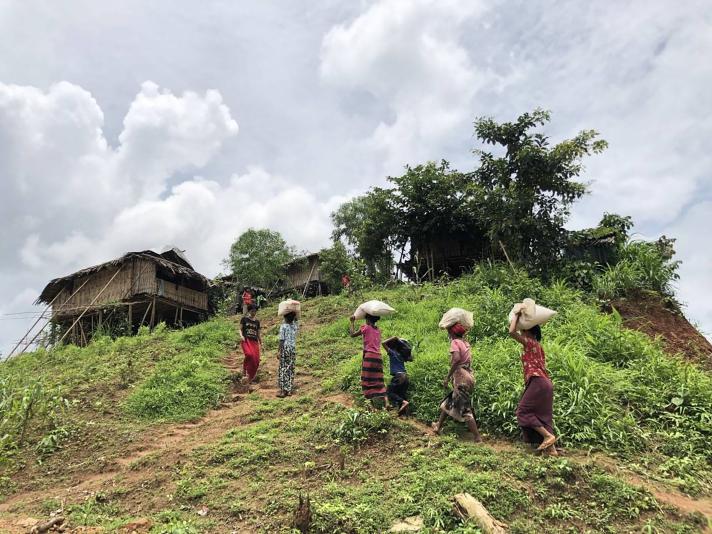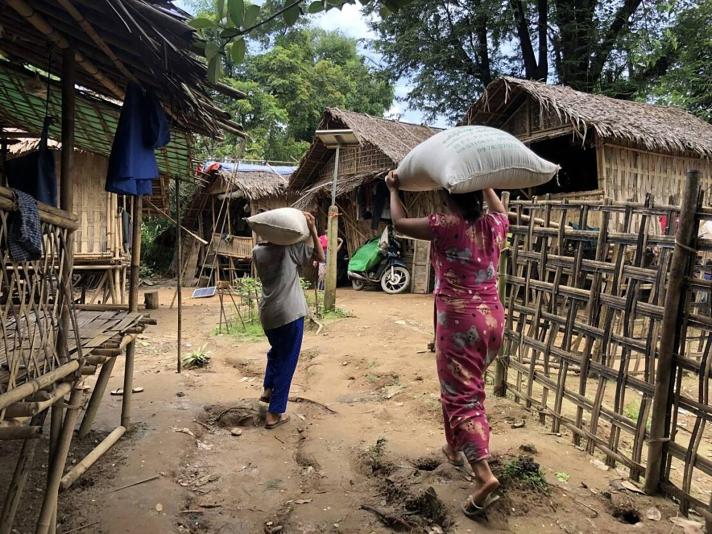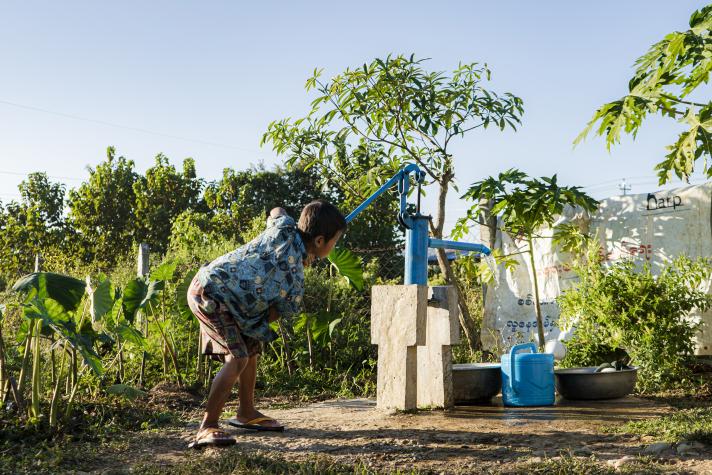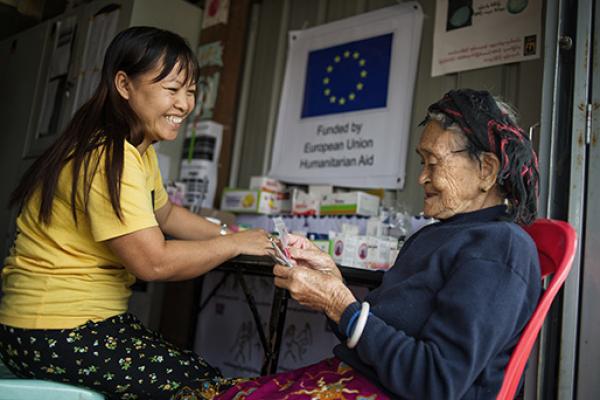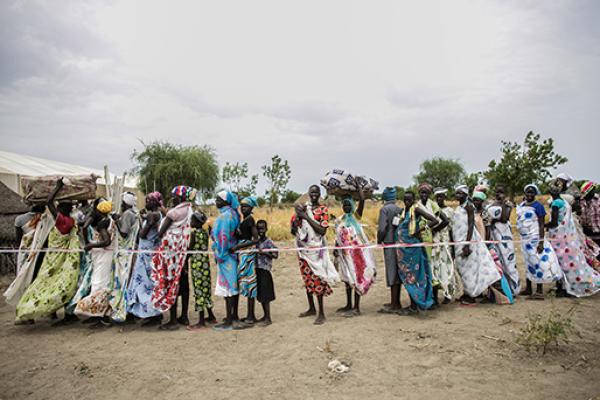In February 2021, Myanmar’s army overthrew the democratically elected government and seized power in a military coup. The country fell into deep social, political and economic turmoil as the army conducted brutal campaigns against perceived opponents.
Since October 2023, fighting between the military and armed opposition groups has intensified and spread across most of Myanmar.
Today the civilian population lives in daily fear for their lives, their coping capacities stretched to breaking point amidst a spiralling humanitarian crisis.
These are the 5 most important things you need to know about the humanitarian situation in Myanmar.
1. Displacement is at an all-time high
Armed conflict in Myanmar is displacing people an alarming rate. By the end of 2023, almost 2.6 million people across the country had fled their homes – a figure equivalent to over a third of the population of neighbouring Laos. And this situation is worsening.
Since the intensification of fighting in October 2023, 628,000 Myanmar people have been forced to flee their homes to escape threats such as air and artillery strikes, executions and killings, forced recruitment, torture, arbitrary detentions, enforced disappearances and persecution.
Families are often forced to flee multiple times, which puts them at increased risk of falling victims to the landmines which have now contaminated almost every region of Myanmar. Many seek safety in jungles and forests, where they lack shelter and access to basic services such as food, medical care and clean water.
2. Humanitarian needs are spiralling out of control
Today, 18.6 million people – roughly 1/3 of the total population – need humanitarian assistance. Before the military takeover in 2021, this figure was only 1 million.
Inflation and conflict continue to drive up the price of food, fuel and other basic necessities. 1/4 of the population currently faces hunger and potential illness due to the collapsed healthcare system. This dangerous combination has led to malnutrition, especially among children, which is threatening to have a long-lasting negative impact on the population of Myanmar.
The ongoing conflict has also disrupted education. About 1/3 of children in Myanmar cannot access education due to lack of access to schools or the threat of airstrikes.
3. Humanitarians struggle to reach those in need
Myanmar’s military is heavily restricting the delivery of humanitarian aid within the country. This means that humanitarian organisations on the ground are faced with both bureaucratic impediments and an increasingly hostile and dangerous environment, making it difficult to reach people in need.
The situation for aid workers in the country has worsened dramatically since the military coup in 2021. In the last 3 years alone 40 aid workers have been killed, 35 injured, 15 kidnapped and 212 arrested, according to ‘Insecurity Insight’.
Despite these growing challenges, humanitarian actors in Myanmar remain committed to delivering life-saving aid. The majority of this support is currently delivered by local, civil society and grassroots organisations who put themselves on the front line to help their communities.
4. There isn’t enough aid to go around
In a world of growing humanitarian emergencies and fleeting media attention, Myanmar is fast becoming a forgotten crisis. The UN’s 2023 Myanmar Humanitarian Response Plan received only about 1/3 of its required funding, leaving a $600 million funding gap.
This means an estimated 1.9 million vulnerable people could not receive the aid they desperately needed, while most of the 3.1 million people who received some form of support did not get enough to fully meet their needs.
The European Union is working hard to help these people in need, allocating over €100 million for life-saving assistance in Myanmar over the past 3 years. However, more funding is required as humanitarian needs continue to spiral out of control.
5. The Rohingya crisis remains unresolved
1 Million Rohingya – an ethnic, religious and linguistic minority within Myanmar – have fled violence, large-scale armed attacks and severe human rights violations since the 1990s. Some 600,000 Rohingya currently remain in Rakhine, an area in western Myanmar. Nearly 1/4 of these people have been confined to camps since 2012. Rohingya in Myanmar are deprived of basic rights including citizenship, freedom of movement and access to resources and essential services.
In addition to funding for humanitarian aid inside Myanmar, in 2023 the European Union has allocated almost €35 million in response to the regional Rohingya refugee crisis. This reaffirms Europe’s commitment to supporting Rohingya refugees and their host communities outside Myanmar.

